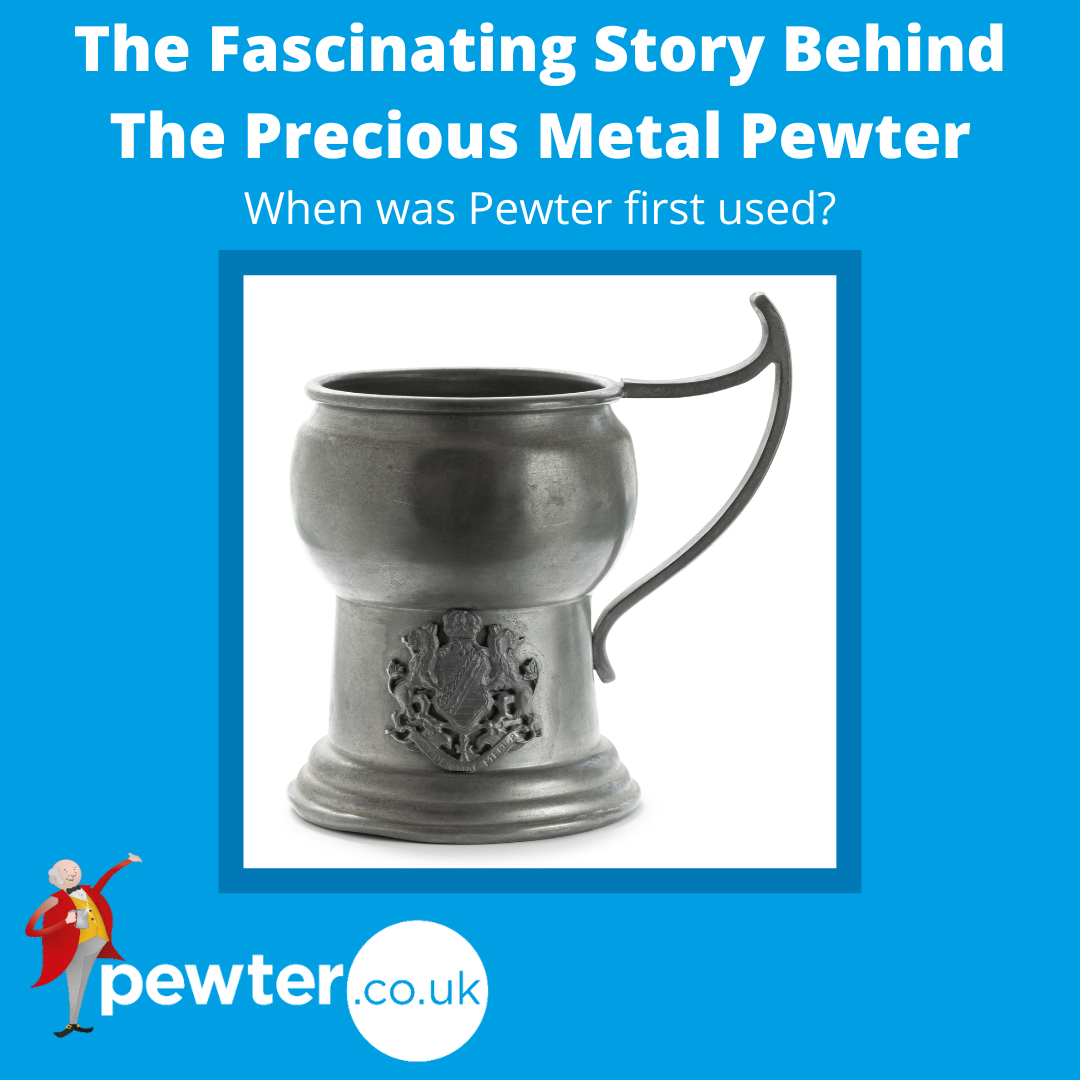
So, who actually discovered Pewter?
Like most things, there isn’t a definitive answer to who first discovered pewter, who first used pewter or where pewter was first used, however there are lots of interesting snippets of information surrounding the introduction of pewter, which we will cover in this blog.
Since Pewter is an alloy, it is not found organically in nature and is instead found as remains of what it was actually manufactured into.
It is also important to note that most of the pewter made during these early times would have contained lead – all quality pewter nowadays contains 0% lead due to the now-known toxicity of the metal and all of our Pewter Gifts are no exception! At Pewter.co.uk we have zero lead in all of our products!
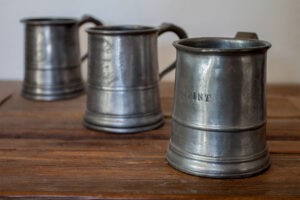
An antique pewter tankard.
Early Pewter – where was the first piece of Pewter found?
4000 – 3001 BC – It is thought that pewter was first used for casting during the Bronze Age (4th Millenium BC).
1450 BC – The earliest pieces of pewter were found in an Egyptian tomb, dating back to 1450 BC, with other sources citing China as where the earliest pieces were found around 2000 years ago.
Pewter was used by Egyptians and Romans, but by the Middle Ages, Europeans were also using Pewter, especially in Britain due to the abundance of tin, copper and lead from the mines in Cornwall (which are Pewter’s main raw materials). During this time, lead was used in abundance in pewter (sometimes up to 15%!), as obviously the toxicity of it was not yet known.
A Timeline of Pewter
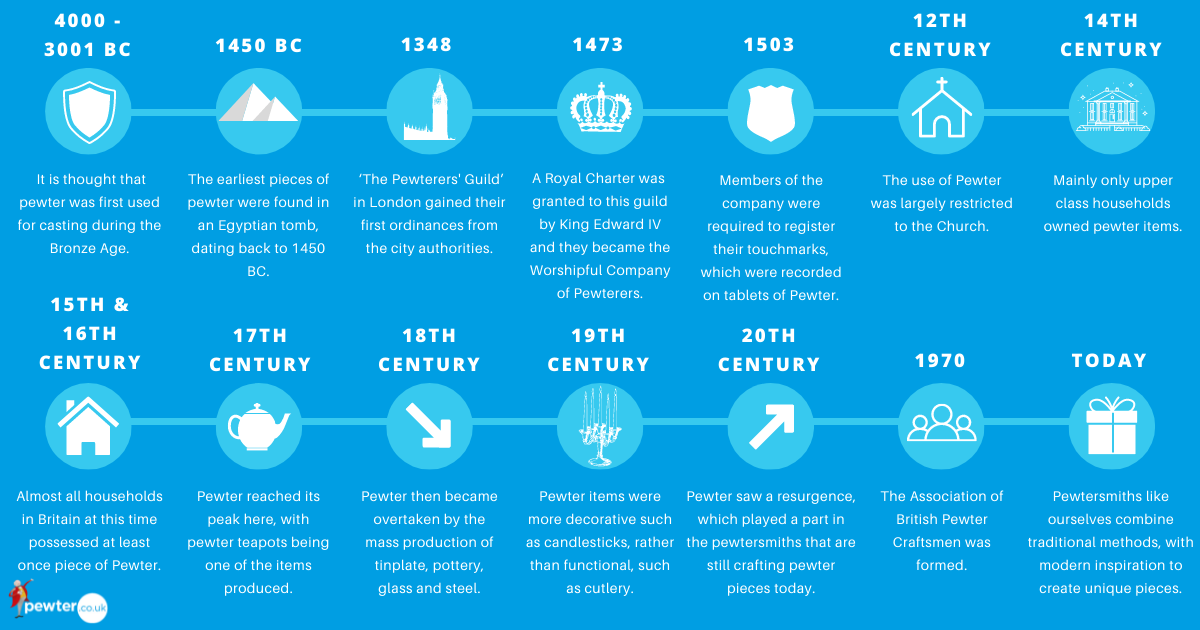
1348 – A guild was set up in London called ‘The Pewterers’ Guild’ and they gained their first ordinances from the city authorities in this year. Their job was to control the manufacturing of pewter and ensure quality was being maintained.
1473 – A Royal Charter was then granted to them by King Edward IV, where they became the Worshipful Company of Pewterers. This gave them the right to control the manufacture of pewter throughout England. They regularly seized and destroyed pewter pieces below their quality standard and also issued fines.
1503 – Members of the Worshipful Company of Pewterers were required to register their touchmarks, which were recorded on tablets of Pewter and kept at the Hall of the Guild. This was to protect the craftsman and also for the public to have faith in that specific pewter company. Local guilds were also set up throughout the 1400s in pewter-making areas.
12th Century – the use of Pewter was largely restricted to the Church.
13th and 14th Century – mainly only upper class households owned pewter items.
15th and 16th Century – Pewter was now being manufactured all over Europe and even as far afield as New York, with a mixture of utilitarian, but also liturgical and decorative items being produced. Almost all households in Britain at this time possessed at least once piece of Pewter. Pewter was Britain’s 2nd largest export (Wool was 1st).
From the 15th century, up until around the 20th century, there were 3 types of pewter during the 15th century, each with a different categories of use, depending on the % lead content.
17th Century – Pewter reached its peak here, with pewter tankards being produced, as well as other items such as porringers (shallow bowls), plates, teapots and cream jugs.
18th Century – Unfortunately, Pewter then became overtaken by the mass production of tinplate, pottery, glass and steel during the industrial revolution and its usage began to decline.
19th Century – Pewter items were more decorative such as candlesticks, rather than functional, such as cutlery. This was due to the Arts and Crafts and Art Nouveau Periods from around 1860 – 1920 and lots of fine pewter items collectable today will have been from this period. Archibald Knox was a significant designer of fine pewter items, with his designs featuring in Liberty and Co. in London.
Caption: Pewter with an intricate coat of arms design cast on the front.
As well as the industrial revolution and the import of porcelain from China, the introduction of EPNS (Electroplated Nickel Silver) in the Victorian age, also played a part in the demise of pewter, as it was a less expensive manufacturing method than the delicate craft of pewtersmiths.
Additionally, Britannia metal was introduced. This form of pewter was able to be worked on an industrial scale in the new factories, but more importantly, it could be plated and so silver items could be copied using Britannia metal for the less wealthy middle and artisan classes. Coincidentally, Sheffield became a centre for the production of Britannia metal items. These items often had the mark EPBM (Electroplated Britannia Metal) on their base.
Pewter scrap was also gathered for weapon manufacturing around this time, so a lot of antique pewter was lost to this.
However, glass was not yet as popular for drinking vessels and so many of these were still made using pewter.
20th Century – Pewter saw a resurgence, which played a part in the pewtersmiths that are still crafting pewter pieces today.
1970 – The Association of British Pewter Craftsmen was formed and re-established the weakening link between the Worshipful Company of Pewterers and the craftsmen themselves. Pewter pieces where the company is a member of this association will usually have the Association of British Pewter Craftsmen stamped onto their pewter items. Wentworth Pewter are proud to be a member of the Association of British Pewter Craftsmen!
Today – As mentioned above, there are still a few pewtersmiths, like ourselves, working today to create high-quality and beautiful pewter pieces. By combining traditional methods and quality, with modern inspiration, pewter can be created into really special and unique decorative pieces or gifts for special events.
If you’d like to learn more about this fascinating metal, check out our Blog ‘All About Pewter’

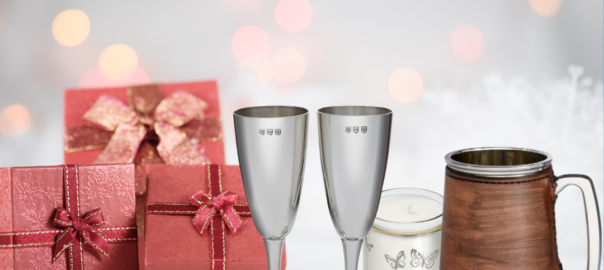

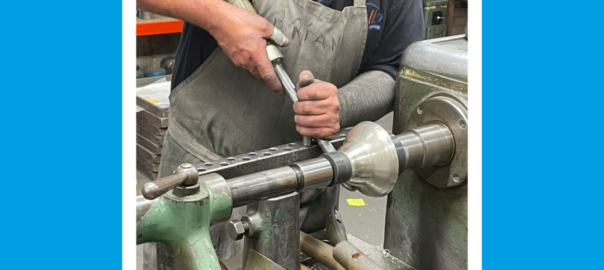
One thought on “The Fascinating Story Behind The Precious Metal Pewter”